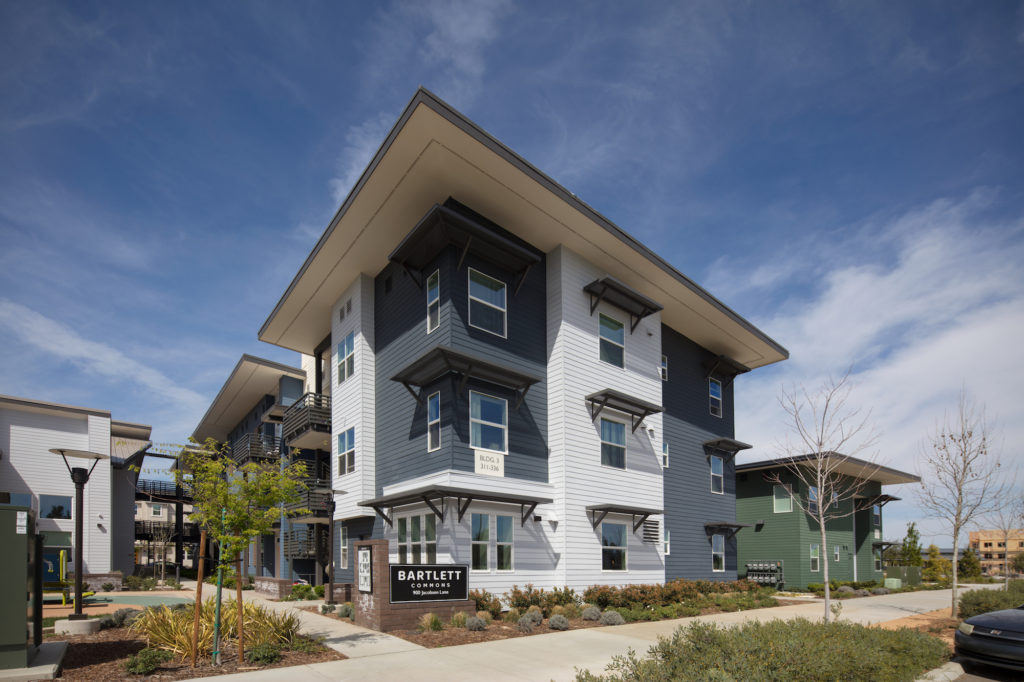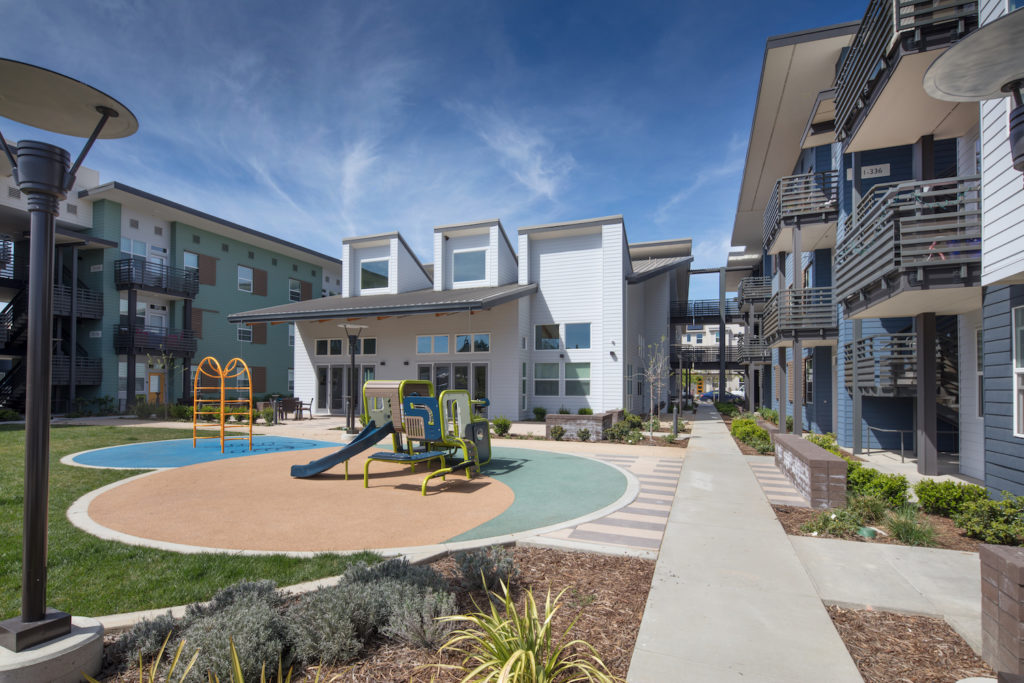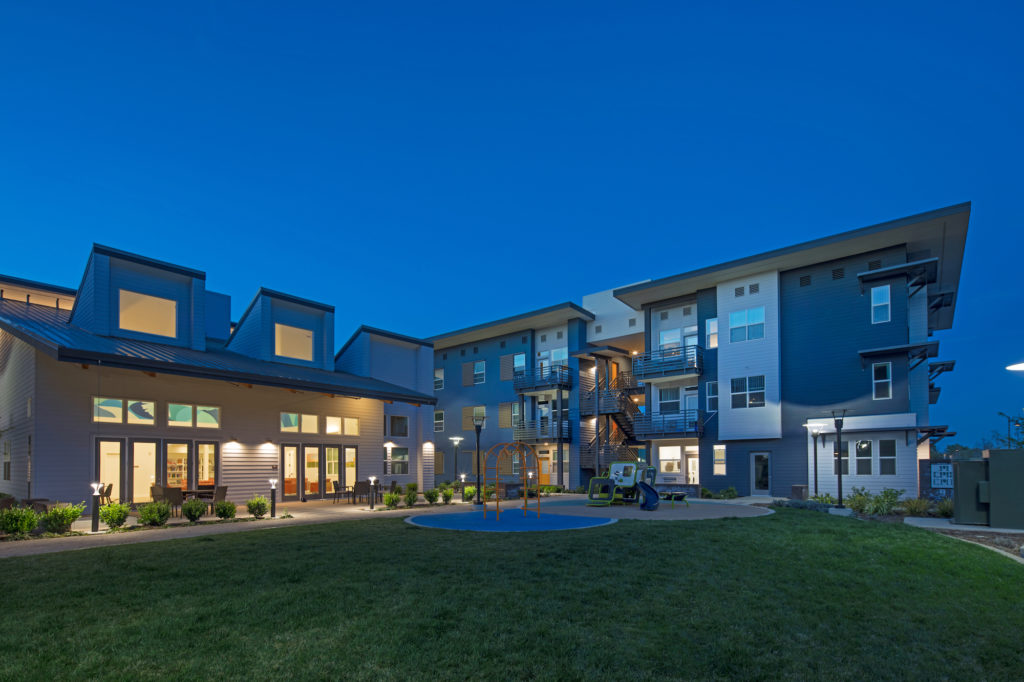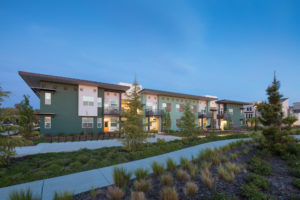Bartlett Commons has won the 2019 Gold Nugget Grand Award for Best Affordable Housing Community (30-60 du/acre), by the Pacific Coast Builders Conference. The community was also honored with a 2018 National Association of Home Builders’ Best in American Living Award, Gold in the Affordable Multifamily category. CFY Development, Inc.’s Bartlett Commons has also received recognition by the Sacramento Business Journal for a 2018 Best Real Estate Projects Award.
As part of California’s first farm-to-table new community, The Cannery in Davis, residents benefit from the amenities in the immediate area. Public parks, bike and walking pathways, and a working 7-acre farm are available to tenants; and the adjacent market and Town Center are easily accessible for restaurants and shopping.

Bartlett Commons’ affordable one, two and three bedroom apartments, feature 62 rental units. The 2,000 square foot community building with on-site property management, fitness room, classroom and laundry facilities opens to a central courtyard with a playground for children. In line with Davis’ sustainability and environmental focus, The Cannery community began with low-impact land use. The site is the former home of the Hunt-Wesson Tomato Cannery, and its central location is just minutes from UC Davis and downtown Davis. The urban farm surrounding the neighborhood provides residents and local restaurants with fresh seasonal produce, and with help from the Center for Land Based Learning, provides agriculture classes to beginning farmers.

Half the units in the project are accessible by applying Universal Design principles and installing an elevator and breezeways between buildings.
The proximity to the City of Davis’ network of bicycle and pedestrian paths make it easy for residents to maneuver through the area, providing for less vehicle use. The project exceeds the requirement of one bicycle parking space per bedroom, and provides a variety of parking options for bikes with carts.

The buildings are designed with tuck-under parking that shield the view of parking from the surrounding neighborhood.


